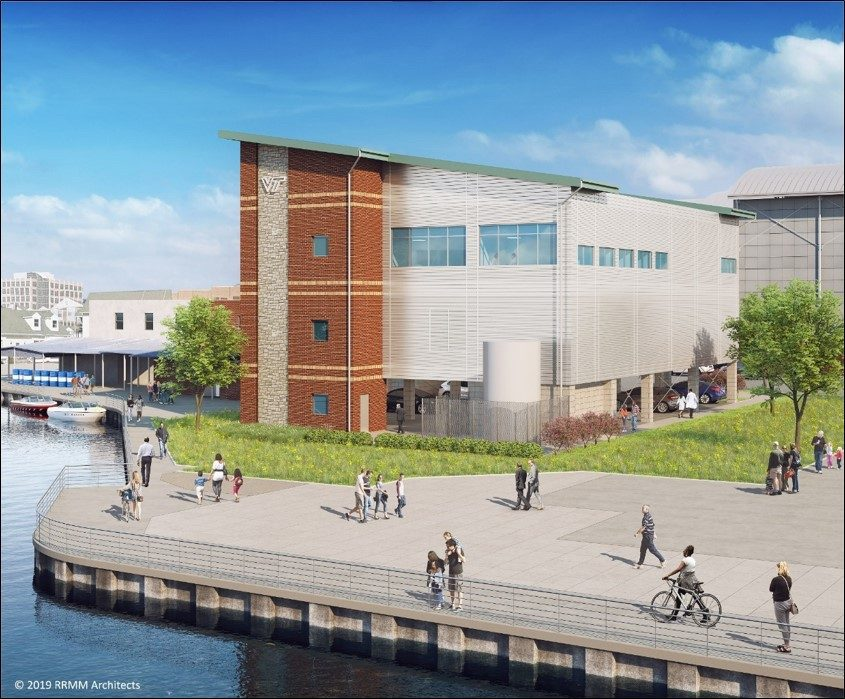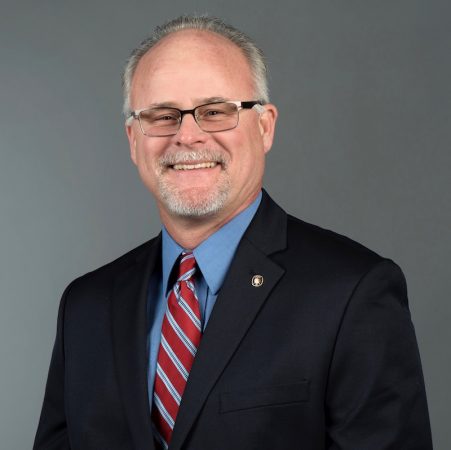
News & Views
Business Management
Research
Sustainability
Technology
New funding to help build new seafood research center in Virginia, USA
October 3, 2019 By Hatchery International staff
 Architectural rendering of the planned Virginia Seafood Agricultural Research and Extension Center (Credit: Virginia Tech)
Architectural rendering of the planned Virginia Seafood Agricultural Research and Extension Center (Credit: Virginia Tech) A $3-million grant from the U.S. Economic Development Administration to construct a new state-of-the-art Virginia Seafood Agricultural Research and Extension Center (AREC) in Hampton, Virginia, is being envisioned to pave the way for further economic growth and collaboration in the commonwealth’s $550-million seafood industry.
“This project will help establish the Virginia Seafood Agricultural Research and Extension Center in Hampton to support the growth of the local seafood industry and attract additional investment through special Opportunity Zone tax incentives,” said U.S. Secretary of Commerce Wilbur Ross. The new facility is expected to create and retain 408 jobs.
Michael Schwarz, director of the Virginia Seafood AREC, was delighted by the news.

Michael Schwarz
“At the Virginia Seafood AREC, we view ourselves as partners with the seafood industry, and we constantly work together to find ways to help it succeed and remain sustainable. This new building, and its significantly enhanced capacity, will allow us to continue to do so in ways that will benefit our partners for decades to come,” he said.
Schwarz said the grant is the first step in a much larger vision to serve and advance seafood industry sectors across the commonwealth, the region, and the nation. The new facility will serve as a hub to lead and support new industrial incubators and Centers of Excellence in support of fisheries and aquaculture.
Since 1975, the AREC has been housed in a refurbished oyster processing building at the water’s edge in Hampton. Over the course of 44 years, the building has been home to many programs and initiatives that have contributed to the industry. Currently, the building is rapidly deteriorating and regularly floods during coastal storms.
The new comprehensive $8.4 million project will be located adjacent to the AREC’s current South King Street location in Hampton. The planned 21,700-square-foot facility will have expanded seafood technologies/processing and microbiological laboratories, upgraded aquaculture and fisheries research facilities and water chemistry labs, expanded classrooms, outreach/demonstration and training facilities, and additional workstations and accommodations for visiting faculty, students, and industry collaborators.
As a component of the Agency 229 new SmartFarm Innovation Network, the facility will also house and support new faculty members in emerging program areas, such as seafood traceability and blockchain.
This announcement follows a list of other partners and stakeholders in the project who have helped contribute funding toward the building’s construction, including: $1.5 million from the City of Hampton; $2.5 million from the Commonwealth of Virginia; and $2 million financed by the Virginia Tech Foundation.
Industry partners are excited about the new building and the impact it will have on local economies.
“A modern, technologically advanced Virginia Seafood AREC is vital to keeping our industry viable and competitive for years to come. We rely on the AREC’s team of experts to help us be national and global leaders in sustainable seafood production,” said Johnny Graham, the president and owner of Graham and Rollins Seafood Inc., Hampton, Virginia, which has been in his family for four generations.
The AREC’s mission is to conduct applied research, produce crucial information, develop modern technologies and new techniques in support of the seafood industry, and to share that knowledge with stakeholders who rely upon it for their success.
With planning and architectural design already well underway, construction is expected to begin as early as the end of 2019, with an estimated 12-month construction period followed by the transfer of all operations within four months thereafter.
Print this page
Advertisement
- ‘Reckless policy’: Aquaculture industry weighs in on Liberal plans
- Acquisition deal merges water treatment tech firms





